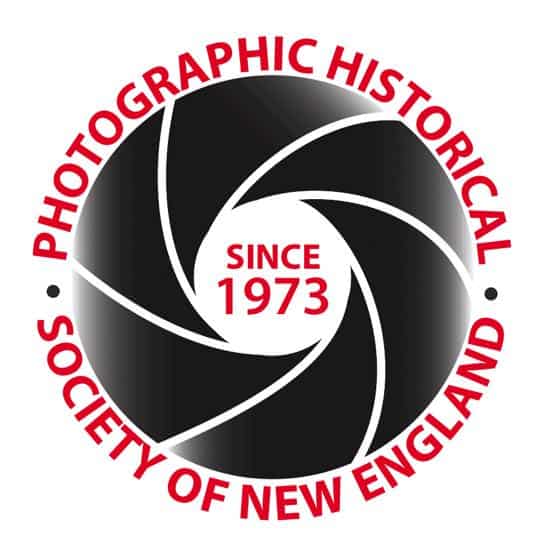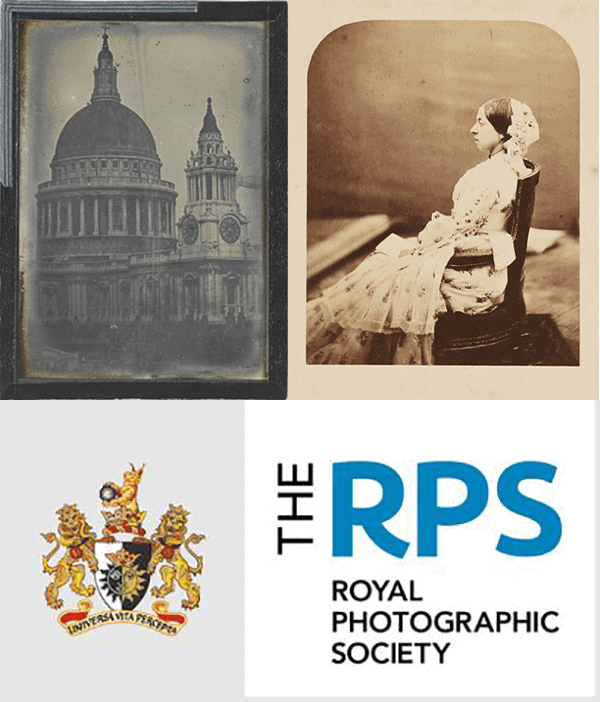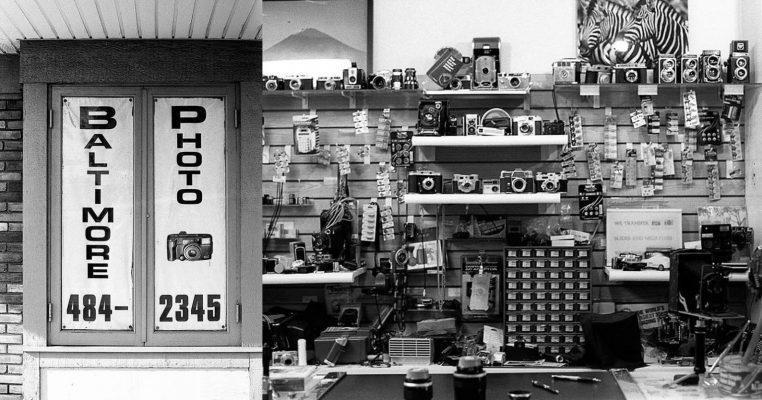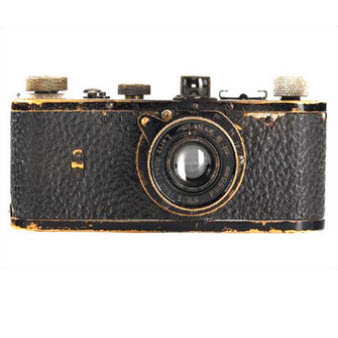This month we’re highlighting the photography of Albert Cook Church (1880-1965), who documented the final days of whaling in his native New Bedford, MA. To view the complete album provided by the New Bedford Whaling Museum, go here.
Blackfish at Fish Island
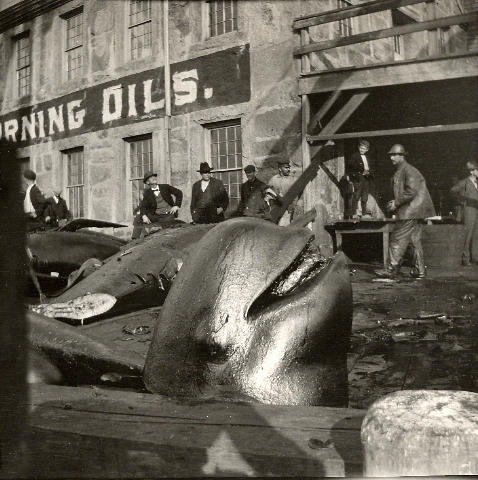
This photograph features the head of a 3-ton blackfish alongside Merrill’s Wharf in New Bedford. The term “blackfish” has been used to describe multiple species of toothed whales that are actually members of the dolphin family. This one specifically was a long-finned pilot whale. These “whales”, among the largest species of oceanic dolphins, were often hunted for bone, meat, oil, and fertilizer.
Church positions the decapitated head front and center in his composition, perhaps to give the viewer a sense of the size and majesty of these animals. The head dwarfs the people in the background, yet they’ve turned the animal into a pile of minced blubber. Circa 1920, this photograph captures a time when the whaling industry was already well into its decline.
John R. Manta’s whaleboat, crew at oars
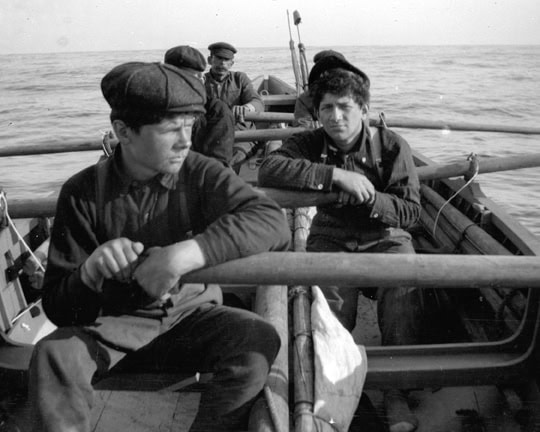
Depicting the crew of John R. Manta’s whaleboat, this image was shot a bit earlier in 1906. But the whaling industry had started to slow even earlier, after the 1859 discovery of petroleum in Pennsylvania. By highlighting the grave, fatigued faces of the crew, is Church referencing discontent with a collapsing industry? Interestingly enough, Manta would later make the last whaling voyage out of New Bedford in 1927.
Mending nets
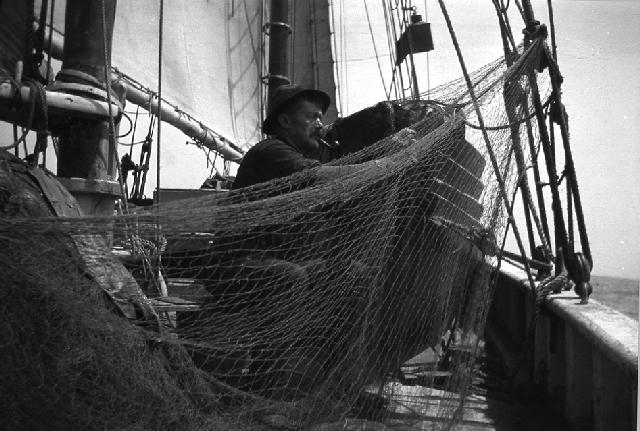
No date is provided for this photograph, which shows a man mending nets aboard a ship. He smokes his pipe, his sole focus the task at hand. Church was a master of quiet observation—perceiving subjects in their environments without leaving a trace of his own presence. We might imagine that this worker, so engaged in the task at hand, didn’t even notice when he snapped the image.
Three riggers aloft, Pierce & Kilburn
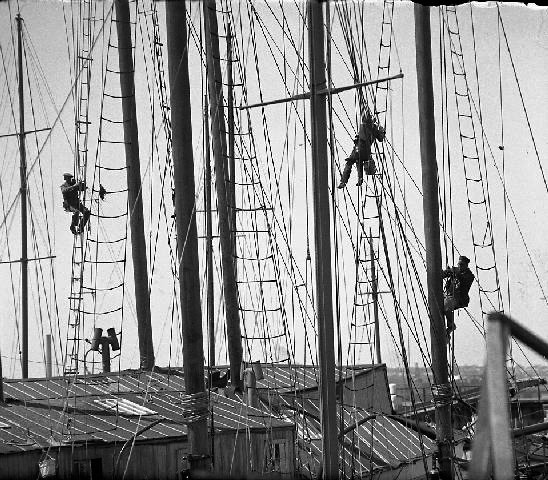
Finally, this image depicts three riggers at work, suspended midair. The date on it is 1934. These men would have been responsible for maintaining, repairing, and configuring a boat’s rigging system. Their job had a major impact on the safety of the boat and its crew, and yet one can see how their own safety was quite literally hanging in the balance. The photograph has striking graphic quality in which the workers almost seem part of the rigging system itself.
When Herman Melville published Moby-Dick in 1851, New Bedford was the beating heart of the whaling world, bustling with ambition as Ishmael boards the Pequod. Church’s photographs offer a very different New Bedford—one facing the end of an era. Where Melville captured the myth, Church captured the aftermath: the fatigue, the uncertainty, and the quiet labor of a declining industry.
Sources:
https://www.whalingmuseum.org/research/research-resources/manuscripts/mss-33/
https://whale-tales.org/the-naming-of-things-blackfish/
https://en.wikipedia.org/wiki/New_Bedford,_Massachusetts#New_Bedford
https://www.whalingmuseum.org/research/research-resources/regional-history/timeline-1602-to-present/
https://www.theriggingpoint.com/what-is-rigging
What the heck…

Are Those Even Cameras?!
Join the PHSNE Newsletter and learn more about photographic history and preservation. Already an expert? Come and share your collections and knowledge as we celebrate the history and advancement of photography.
